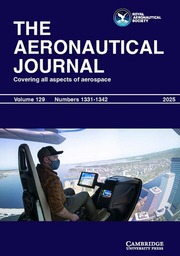No CrossRef data available.
Article contents
Extract
It is my privilege to speak to you tonight on some aspect of the work of testing experimental aircraft, and in order to present my subject to you in as lucid a manner as possible, I am going to ask you to consider that we actually have a machine before us waiting for its first test.
We must assume that the cockpit arrangements have been approved before this, for so much has to be done that can only rightly be done as the machine is being built. The seat and rudder positions must be comfortable, windscreening good, view ample, engine controls handy, flying controls accessible, smooth and firm, petrol flow satisfactory and necessary instruments must be clearly visible. The first thing to be done is to weigh and balance the machine. From this we learn the total weight—the designer learns whether he has been clever or not—and then we chase that elusive spot the e.g. The wing position and tail setting have been designed with the e.g. in an assumed position, and if one weighing shows it to be seriously out, then before the machine can be flown it should be ballasted to bring it to the required balance. The flying controls should be carefully tested by the pilot. It is not sufficient to waggle the joystick and watch the ailerons and «levators move; very careful attention must be given to see that they move the right way.
- Type
- Eighty Years of Aviation
- Information
- Copyright
- Copyright © Royal Aeronautical Society 1977


